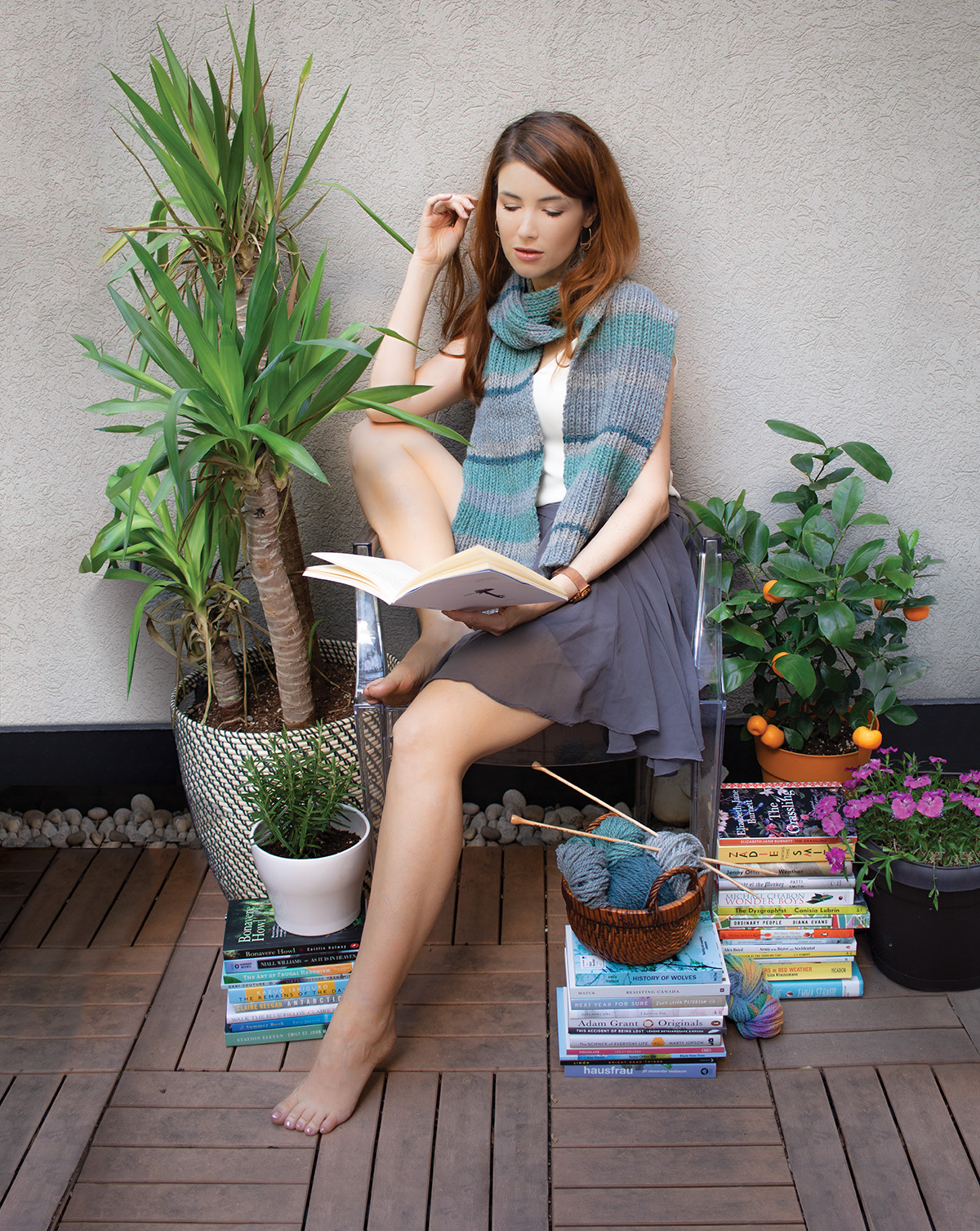
When I can’t sleep, I mentally curate a personal list of “secret cabin” books. Most people call them “desert island” favourites, but my secluded isolation fantasy isn’t tropical. It centers on a beautiful cabin in a deep wood, possibly on a small lake with a mysterious name, where I am surrounded by piles of books I love and new ones I’m about to love even more.
But I am not suggesting this book list as a means of falling asleep, though, if you struggle with falling asleep, like I do, then have at it. No, I’m going to suggest you knit a scarf—one based on the books you’ve been reading and how much you enjoyed them.
This is where one might typically say something about the proven psychological benefits of making something with your own hands from beginning to completion. So many of our typical tasks are just a piece of something else, and our brains aren’t wired to find that fulfilling or satisfying. It’s the math of knitting that soothes me—the laws that numbers operate, the equations devoid of narrative. A framework where you are the one who interprets and applies meaning instead of having it handed to you in a pithy tweet while scrolling, casually searching for the next bad-news fix that exempts you from doing something good or useful.
What I love about knitting is the same thing I love about writing poetry—it’s math that makes both work well. Different mathematical principles for each, yes, but math all the same. Poetry is improved massively by rhythm (a lot could be written on the geometric shapes that underpin what makes a rhythm effective), length of line, physical structure, and patterns. Knitting is a textural relationship between the variables of algebra and the dimensions of geometry.
Geometry is the relationship of points and lines, and those connections fascinate me. The arrangements of words on a page, the arrangements of stitches to form a fabric. I am taking liberties, absolutely—the kind of connections the brain can leap to and from, like a bee staggering from flower to flower. The kind of connections that bloom when you read a stack of new books and let their various images bang together in your mind and cross-pollinate. An idea made from the relationship of those discordant pieces into a series of points and lines, your mind creating a new geometric equation connecting them in something you’ve never experienced before.
There is poetry in that. In these stitches, these colours, in your two hands looping a soft, tiny cylinder of fibre into a wearable representation of that repetition. A multiplication of hope, of anxiety, of whatever churns inside of you. Fingers functioning as levers, the machine of your body turning all of that into a scarf while you sit in your home or a park—or a secluded cabin in a deep wood, possibly on a small lake with a mysterious name.
Keep it. Give it away. Whatever you do with it, it came from you.
The Book Review Scarf
This is a simple ribbed scarf, designed to be a visual review and reminder of the books you read over a chosen timeframe. I chose four colours that co-ordinated and assigned each colour a star rating (the star rating is important—you will need it for the pattern).
The Star Rating
1 star = 2 rows of K1, P1 ribbing
2 stars = 4 rows of K1, P1 ribbing
3 stars = 6 rows of K1, P1 ribbing
4 stars = 8 rows of K1, P1 ribbing
(One right side and one wrong is two rows.)
Needle Size
8 mm/U.S. 11
Yarn
Berroco Mercado, four skeins (or other bulky weight yarn, 820 yards)
Colours Used in Sample
4153 Agua Marina (dark blue) = 1 star
4016 Niebla (light grey) = 2 stars
4128 Cielo (blue grey) = 3 stars
4129 Laguna (sea glass) = 4 stars
Notions
Tapestry needle to weave in ends.
Pattern
Cast on 36 stitches, using the colour of your first book review. Work the number of rows that you assigned that book in your star rating. Continue alternating (or not alternating) colours as they correspond with the star rating stripes. Continue until scarf measures 80 inches long. Cast off, and weave in ends for your stripes.
If any of these techniques are unfamiliar, I recommend doing a search online to find tutorials or videos, of which there are a staggering number.